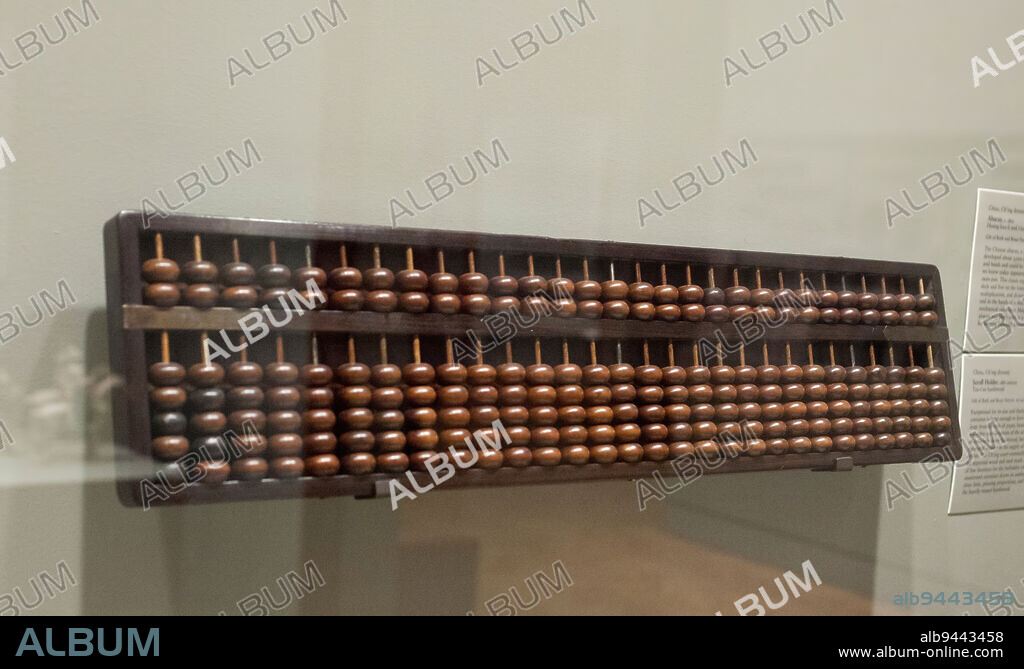alb9443458
Abacus, c. 1800, 7 9/16 x 32 5/16 x 1 3/8 in. (19.2 x 82.1 x 3.5 cm), Huang-hua-li and t'zu-tan hardwood, China, 18th-19th century, The Chinese abacus, a mechanical counting device, was developed about 5,000 years ago. It was built of wood and beads and could be easily carried. The form of abacus we know today appeared around 1200 a.d. and is called suan-pan. This classic type has two heads on the upper deck and five on the lower. Addition, subtraction, multiplication, and division are possible with the abacus, and in the hands of a skilled operator, it is faster than a mechanical calculator. Made of precious hardwoods, this abacus was likely used in a large, aristocratic household for keeping financial accounts.

|
Zu einem anderen Lightbox hinzufügen |
|
Zu einem anderen Lightbox hinzufügen |



Haben Sie bereits ein Konto? Anmelden
Sie haben kein Konto? Registrieren
Dieses Bild kaufen

Untertitel:
Siehe automatische Übersetzung
Abacus, c. 1800, 7 9/16 x 32 5/16 x 1 3/8 in. (19.2 x 82.1 x 3.5 cm), Huang-hua-li and t'zu-tan hardwood, China, 18th-19th century, The Chinese abacus, a mechanical counting device, was developed about 5,000 years ago. It was built of wood and beads and could be easily carried. The form of abacus we know today appeared around 1200 a.d. and is called suan-pan. This classic type has two heads on the upper deck and five on the lower. Addition, subtraction, multiplication, and division are possible with the abacus, and in the hands of a skilled operator, it is faster than a mechanical calculator. Made of precious hardwoods, this abacus was likely used in a large, aristocratic household for keeping financial accounts.
Bildnachweis:
Album / quintlox
Freigaben (Releases):
Model: Nein - Eigentum: Nein
Rechtefragen?
Rechtefragen?
Bildgröße:
5118 x 3080 px | 45.1 MB
Druckgröße:
43.3 x 26.1 cm | 17.1 x 10.3 in (300 dpi)
 Pinterest
Pinterest Twitter
Twitter Facebook
Facebook Link kopieren
Link kopieren Email
Email
